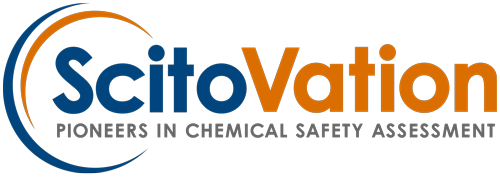We are excited to present our first recorded installment for our 2024 webinar series. Jeff Fisher, PhD, ScitoVation’s Senior Science Fellow, will be speaking about thyroid disruption and IVIVE based on his latest publication.
ScitoVation scientists continue advancing the benefits of IVIVE modeling.
What you’ll learn:
- Thyroid modeling demonstrating IVIVE for a molecular initiating event determined in vitro
- How to construct a steady state biologically based dose response (BBDR) model for the HPT axis
- Simulation results comparing predictions with measured thyroid hormone disturbance
Watch the Recording
Dr. Jeffrey Fisher is currently a Senior Science Fellow at ScitoVation. Prior to joining, Dr. Fisher was a biomedical research service employee (Research Toxicologist) with the U.S. Food and Drug Administration, National Center for Toxicological Research. He was formerly a Professor in the Department of Environmental Health Science, College of Public Health at the University of Georgia (UGA). He joined the University of Georgia in 2000 and served as Department Head of the Department of Environmental Health Sciences from 2000 to 2006 and Director of the Interdisciplinary Toxicology Program at UGA from 2006-2010. From 1975 to 2000 he worked at a toxicology laboratory, Wright Patterson AFB. He started working as a technician, then progressed to principal investigator and senior scientist in the Toxics Hazards Division before becoming the Technical Advisor for the Operational Toxicology Branch.
Dr. Fisher’s research interests are in the development and application of pharmacokinetic and biologically based mathematical models to ascertain health risks from environmental, food-borne, and occupational chemical exposures. While in the FDA he has become involved in the use of PBPK models for drug dose selection in pediatric populations. Dr. Fisher’s chemical toxicology modeling experience includes working with chlorinated and non-chlorinated solvents, fuels, pesticides, perchlorate, PFOA, and bisphenol A. He has developed PBPK models for use in cancer risk assessment, estimating lactational transfer of solvents, understanding in utero and neonatal dosimetry, quantifying metabolism of solvent mixtures and developing biologically motivated models for the hypothalamic-pituitary-thyroid axis in rodents and humans. Dr. Fisher has 30 years of experience in physiological modeling and has trained several graduate students and postdoctoral fellows on the concepts and application of physiological models. He was a visiting scientist at the Chemical Industry Institute of Toxicology in 1996 and at the NIOSH Taft Laboratory in 1999. During this time, he also served as Adjunct Professor in the Department of Pharmacology and Toxicology at Wright State University. Dr. Fisher has published over 190 papers on pharmacokinetics and PBPK modeling in laboratory animals and humans. He has served on several national panels and advisory boards for the DoD, ATSDR, USEPA and non-profit organizations. He was a U.S. delegate for the North Atlantic Treaty Organization. He was president of the Biological Modeling Specialty Section of the Society of Toxicology (2019), member of the National Academy of Sciences subcommittee on Acute Exposure Guideline Levels (AEGLs) from 2004-2010 and a member of the Science Advisory Board (SAB) for the US EPA (2007-2010). He has served recently as an ad hoc member of the SABs for dioxin and perchlorate. He is a fellow of the Academy of Toxicological Sciences and a former associate editor for Toxicological Sciences. Dr. Fisher has a B.S. degree in biology from the University of Nebraska at Kearney, a M.S. degree in biology from Wright State University, and a PhD in zoology/toxicology from Miami University.
Abstract:
Despite the number of in vitro assays that have been recently developed to identify chemicals that interfere with the hypothalamic-pituitary-thyroid axis (HPT), the translation of those in vitro results into in vivo responses (in vitro to in vivo extrapolation, IVIVE) has received limited attention from the modeling community. To help advance this field a steady state biologically based dose response (BBDR) model for the HPT axis was constructed for the pregnant rat on gestation day (GD) 20. The BBDR HPT axis model predicts plasma levels of thyroid stimulating hormone (TSH) and the thyroid hormones, thyroxine (T4) and triiodothyronine (T3). Thyroid hormones are important for normal growth and development of the fetus. Perchlorate, a potent inhibitor of thyroidal uptake of iodide by the sodium iodide symporter (NIS) protein, was used as a case study for the BBDR HPT axis model. The inhibitory blocking of the NIS by perchlorate was associated with dose-dependent steady state decreases in thyroid hormone production in the thyroid gland. The BBDR HPT axis model predictions for TSH, T3, and T4 plasma concentrations in pregnant Sprague Dawley (SD) rats were within 2-fold of observations for drinking water perchlorate exposures ranging from 10 to 30,000 μg/kg/d. In Long Evans (LE) pregnant rats, for both control and perchlorate drinking water exposures, ranging from 85 to 82,000 μg/kg/d, plasma thyroid hormone and TSH concentrations were predicted within 2 to 3.4- fold of observations. This BBDR HPT axis model provides a successful IVIVE template for thyroid hormone disruption in pregnant rats.
About ScitoVation:
ScitoVation helps clients assess chemical compound safety using innovative science, next-generation technology, and professional expertise. ScitoVation is known for partnership, flexibility, and proven success in its work to develop safer and more effective pharmaceuticals, food ingredients, agricultural chemicals, commodity chemicals and consumer products. A spin-off of the former The CIIT and The Hammer Institutes for Chemical & Drug Safety Sciences, ScitoVation is an industry leader of New Approach Methods (NAMS) for chemical/drug discovery & development in the rapidly evolving global regulatory landscape.
